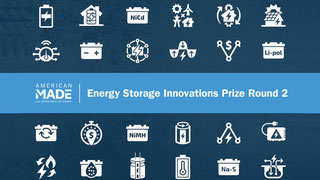Feb 05, 2016, 16:08 ET
News provided by
Mars, Incorporated
Mars, Incorporated to remove all artificial colors from its human food portfolio
Five-year effort will impact chocolate, gum, confection, food and drink brands
MCLEAN, Va., Feb. 5, 2016 /PRNewswire/ -- Mars, Incorporated announced today that it will remove all artificial colors from its human food products as part of a commitment to meet evolving consumer preferences.
Though many of the company's products are already free of artificial colors, by expanding the scope of the effort to its entire human food portfolio, Mars is making a commitment of significant depth and breadth. Products across the range of the company's chocolate, gum, confection, food and drink businesses will be affected by the change, which will take place incrementally over the next five years.
Artificial colors pose no known risks to human health or safety, but consumers today are calling on food manufacturers to use more natural ingredients in their products. Against this backdrop, Mars will work closely with its suppliers to find alternatives that not only meet the its strict quality and safety standards, but also maintain the vibrant, fun colors consumers have come to expect from the company's beloved brands.
"We're in the business of satisfying and delighting the people who love our products," said Grant F. Reid, President and CEO of Mars, Incorporated. "Eliminating all artificial colors from our human food portfolio is a massive undertaking, and one that will take time and hard work to accomplish. Our consumers are the boss and we hear them. If it's the right thing to do for them, it's the right thing to do for Mars."
Today Mars uses a variety of naturally sourced and artificial colors in its global product portfolio. Depending on consumer preferences, ingredient availability and local regulations, slightly different formulations and products may exist in different markets. However, all ingredients used by the company are safe, and all are manufactured in compliance with Mars' own strict internal quality and safety requirements and the requirements established by food safety regulators globally, including the U.S. Food and Drug Administration (FDA) and the European Food Safety Authority (EFSA).
Removing all artificial colors from a human food portfolio that features more than 50 brands represents a complex challenge. Mars' strategy includes partnering with suppliers to identify new ingredients and formulas that meet its rigid safety and quality standards, addressing all legal and regulatory requirements, and creating accessible ways to gather input and feedback from consumers throughout the reformulation process. The company believes the process of developing alternative colors, ensuring their safety and quality, obtaining regulatory approval, and introducing the new ingredients across the entirety of its human food portfolio around the world will take about five years.
About Mars, Incorporated
Mars, Incorporated is a private, family-owned business with more than a century of history and some of the best-loved brands in the world including M&M'S®, PEDIGREE®, DOUBLEMINT® and UNCLE BEN'S®. Headquartered in McLean, VA, Mars has more than $33 billion in sales from six diverse business segments: Petcare, Chocolate, Wrigley, Food, Drinks and Symbioscience. More than 80,000 Associates across 73 countries are united by the company's Five Principles: Quality, Efficiency, Responsibility, Mutuality and Freedom and strive every day to create relationships with stakeholders that deliver growth we are proud of as a company.
For more information about Mars, Incorporated, please visit www.mars.com. Follow us on Facebook, Twitter, LinkedIn and YouTube.
Contact
Mars, Incorporated
Jonathan Mudd, (703) 821-4956
jonathan.mudd@effem.com
To view the original version on PR Newswire, visit:http://www.prnewswire.com/news-releases/mars-incorporated-to-remove-all-artificial-colors-from-its-human-food-portfolio-300216158.html
SOURCE Mars, Incorporated
Feb 05, 2016, 16:08 ET
News provided by
Mars, Incorporated
Mars, Incorporated to remove all artificial colors from its human food portfolio
Five-year effort will impact chocolate, gum, confection, food and drink brands
MCLEAN, Va., Feb. 5, 2016 /PRNewswire/ -- Mars, Incorporated announced today that it will remove all artificial colors from its human food products as part of a commitment to meet evolving consumer preferences.
Though many of the company's products are already free of artificial colors, by expanding the scope of the effort to its entire human food portfolio, Mars is making a commitment of significant depth and breadth. Products across the range of the company's chocolate, gum, confection, food and drink businesses will be affected by the change, which will take place incrementally over the next five years.
Artificial colors pose no known risks to human health or safety, but consumers today are calling on food manufacturers to use more natural ingredients in their products. Against this backdrop, Mars will work closely with its suppliers to find alternatives that not only meet the its strict quality and safety standards, but also maintain the vibrant, fun colors consumers have come to expect from the company's beloved brands.
"We're in the business of satisfying and delighting the people who love our products," said Grant F. Reid, President and CEO of Mars, Incorporated. "Eliminating all artificial colors from our human food portfolio is a massive undertaking, and one that will take time and hard work to accomplish. Our consumers are the boss and we hear them. If it's the right thing to do for them, it's the right thing to do for Mars."
Today Mars uses a variety of naturally sourced and artificial colors in its global product portfolio. Depending on consumer preferences, ingredient availability and local regulations, slightly different formulations and products may exist in different markets. However, all ingredients used by the company are safe, and all are manufactured in compliance with Mars' own strict internal quality and safety requirements and the requirements established by food safety regulators globally, including the U.S. Food and Drug Administration (FDA) and the European Food Safety Authority (EFSA).
Removing all artificial colors from a human food portfolio that features more than 50 brands represents a complex challenge. Mars' strategy includes partnering with suppliers to identify new ingredients and formulas that meet its rigid safety and quality standards, addressing all legal and regulatory requirements, and creating accessible ways to gather input and feedback from consumers throughout the reformulation process. The company believes the process of developing alternative colors, ensuring their safety and quality, obtaining regulatory approval, and introducing the new ingredients across the entirety of its human food portfolio around the world will take about five years.
About Mars, Incorporated
Mars, Incorporated is a private, family-owned business with more than a century of history and some of the best-loved brands in the world including M&M'S®, PEDIGREE®, DOUBLEMINT® and UNCLE BEN'S®. Headquartered in McLean, VA, Mars has more than $33 billion in sales from six diverse business segments: Petcare, Chocolate, Wrigley, Food, Drinks and Symbioscience. More than 80,000 Associates across 73 countries are united by the company's Five Principles: Quality, Efficiency, Responsibility, Mutuality and Freedom and strive every day to create relationships with stakeholders that deliver growth we are proud of as a company.
For more information about Mars, Incorporated, please visit www.mars.com. Follow us on Facebook, Twitter, LinkedIn and YouTube.
Contact
Mars, Incorporated
Jonathan Mudd, (703) 821-4956
jonathan.mudd@effem.com
To view the original version on PR Newswire, visit:http://www.prnewswire.com/news-releases/mars-incorporated-to-remove-all-artificial-colors-from-its-human-food-portfolio-300216158.html
SOURCE Mars, Incorporated








